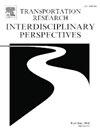Over-Dimension and Over-Load (ODOL) truck in highways: Prevalence and modeling intention to operate ODOL truck, lesson learned from Indonesia
IF 3.9
Q2 TRANSPORTATION
Transportation Research Interdisciplinary Perspectives
Pub Date : 2025-01-01
DOI:10.1016/j.trip.2024.101320
引用次数: 0
Abstract
Over-dimension overload (ODOL) vehicles, known as vehicles with dimensions and carrying loads that exceed predetermined standards, are a serious issue because they are one of the factors causing road damage and one of the factors causing traffic accidents on highways. The purpose of this study is to observe the prevalence of ODOL trucks on Indonesian highways and the factors that influence the operation of ODOL trucks from the view of the driver and owner.
Observation on site is conducted to observe over-dimension trucks, whereas the over-load truck is counted using observation of CCTV. A survey is applied to obtain the perception and influence factors of ODOL truck operation from the view of the driver. The questionnaire items used in this study are developed from constructs derived from the Theory of Planned Behavior (TPB), the Health Belief Model (HBM), Legal Sanctions, and Non-legal Sanctions. One hundred and thirty-four truck drivers and forty-four truck owners gave answers on a Likert scale with a scale of one to five from strongly disagree to strongly agree.
The result shows that the estimated prevalence of ODOL trucks on Indonesian highways is 37.78 %. Based on the alternative models of ODOL truck operating intentions that were compared, a combination of HBM and Legal and Non-legal Sanctions is the most appropriate model for modeling ODOL truck operating intentions among drivers. Factors that influence the intention to operate ODOL are perceived severity, perceived barriers, cues to action, and non-legal sanctions. The model is validated with survey of truck owners.
求助全文
约1分钟内获得全文
求助全文
来源期刊

Transportation Research Interdisciplinary Perspectives
Engineering-Automotive Engineering
CiteScore
12.90
自引率
0.00%
发文量
185
审稿时长
22 weeks
 求助内容:
求助内容: 应助结果提醒方式:
应助结果提醒方式:


